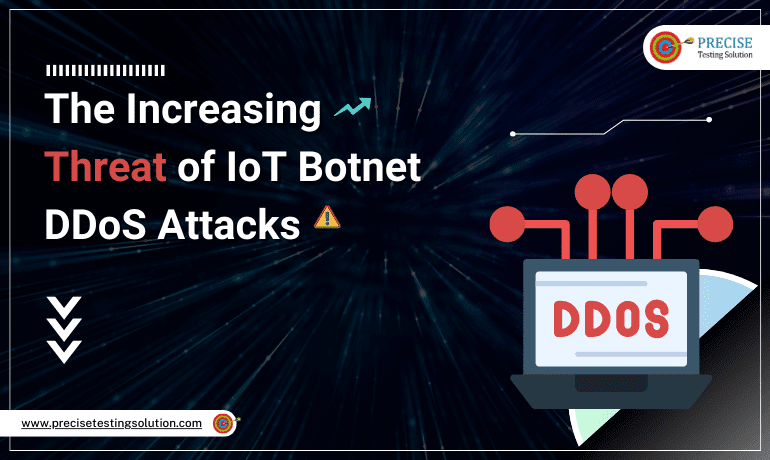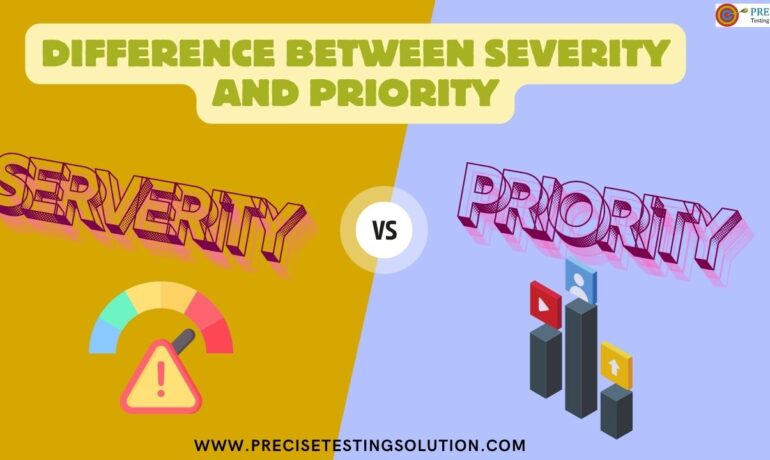Why is there a growing concern about DDoS attacks on IoT devices?
IoT-based DDoS attacks have become one of the major challenges for cyber security in recent times and require proper attention. The DDoS (Distributed Denial of Service) attackers are making use of the restricted resources in IoT devices, such as storage and network bandwidth, to cause problems in the applications of IoT devices.
Through this article, we’ll gain a thorough understanding of why IoT devices have become a popular target for DDoS attacks and the major IoT-based DDoS attacks that can eventually cause serious harm to IoT systems. Also, we will discuss the possible strategies that can be used to counter the IoT-based DDoS attacks.
- Why are IoT devices becoming a popular target for DDoS attacks?
- What are the major IoT-based DDoS attacks?
- What are the strategies to counter IoT-based DDoS attacks?
Why are IoT devices becoming a popular target for DDoS attacks?
- The rising prevalence of IoT devices has opened the path for the creation of IoT botnets, which are now used to amplify DDoS attacks. This is a serious warning that the likelihood of a powerful DDoS attack and an extensive service disruption will hinder business growth.
- Botnets which are a network of infected computers controlled by attackers that are used to carry out different frauds and cyber-attacks used by cybercriminals for a variety of harmful reasons, the most common of which are IoT Botnet DDoS attacks used to seize control of susceptible IoT devices with the aim to prevent legitimate users from accessing internet services through building an army of botnets to launch DDoS attacks on a large scale in order to infect a vulnerable website or application.
- Although IoT botnets are capable of stealing only confidential information or data, but the majority of botnets have also been used for DDoS attacks with the use of peer-to-peer (P2P) networking in some botnets eliminates the requirement for a command and control (C&C) server, making it more difficult to shut them down.
- Furthermore, most IoT devices have major security flaws such as weak passwords, unrestricted access to management systems, default administrator credentials, or inadequate security setups. As the number of IoT devices grows, they are not continually updated to address security risks.
- IoT Botnet DDoS Attacks take advantage of IoT vulnerabilities to gain control of devices and interrupt services on the internet. They are most commonly found on networks that are not being monitored for attacks, making it easy for attackers to get access to them.

What are the major IoT-based DDoS attacks?
- Mirai – IoT Botnet DDoS Attacks are not a new phenomenon. The most common is the Mirai Botnet, which has been targeting IoT devices since its inception in 2016. The Mirai Botnet attacked the targeted system with one terabit of traffic per second, setting up a new DDoS attack record. In the late 2019 and early 2020, the most observed flooding traffic was caused by a new Mirai variant named Mozi. It is still a threat in the year 2023, having widened their attack with major new capabilities. Cyber attackers are targeting devices using botnets based on Mirai and Mozi, such as Echobot, BotenaGo, Moonet, and Loli.
- Kaiten – Also known as Tsunami, Kaiten is a well-known open-source DDoS botnet which is popular among fraudsters and hackers since 2001. Kaiten propagates itself through brute-forcing Telnet services. Its most current variants have a bot-killing mechanism that removes any past infections in the IoT systems.
- Qbot – Qbot is likewise a relatively new IoT botnet malware family. It first appeared in 2008, however it is still widely used by cybercriminals. Bashlite, Gafgyt, Lizkebab, and Torlus are some more names for it. Qbot’s variations, like Kaiten’s, have a bot-killing capability that uninstalls other botnet software.
- Kneber – A recently discovered network of compromised hosts dubbed the “Kneber botnet” successfully infected 75,000 hosts within over 2,500 organizations worldwide, including Fortune 500 companies as well as Local, State, and US Federal Government agencies.
- Wifatch – originally appeared in 2014, was the first IoT malware with P2P capabilities. It is categorised as “Robin Hood” malware, with its makers stating that it was created to safeguard routers against more dangerous malware. It employs a simple and custom-made P2P (peer-to-peer) protocol written in Perl programming language.
- Hajime – Hajime first appeared in 2016. It was initially compared to Mirai because to the fact that they both targeted many of the same devices. Hajime, unlike Mirai, does not have third-party attacking capabilities, although it does have P2P (peer-to-peer) capabilities. Hajime uses the DHT (Distributed Hash Table) protocol, which is responsible for Bitterant’s distributed file system sync-up between disparate nodes without the use of a centralized server.
What are the strategies to counter IoT-based DDoS attacks?
- Use of next generation web application firewalls like Indusface, AppTrana, which may block harmful bots from specific IP addresses while allowing legitimate bot traffic to flow freely and helps to detect incoming and outgoing network data for any harmful activity.
- Manage vulnerabilities as quickly possible and apply updates. Malware affects devices mostly through vulnerabilities. Applying updates as soon as they are issued can help to reduce the likelihood of potential exploits.
- Configure your IoT system to be secure. Users must ensure that their IoT devices are configured in the most secure way possible to reduce the possibility of compromise.
- Use strong, difficult-to-guess passwords. Botnet virus uses weak and common passwords to gain control of devices. Users can avoid this method by changing their default passwords and employing strong passwords.
The Conclusion
Hence, from the above discussion, we can conclude this article by saying DDoS attacks are the most common purpose of an IoT botnet. DDoS attacks are an unavoidable aspect of the new reality, but they do not have to be the new standard. Creating comprehensive security solutions is the way ahead to appropriately secure IoT devices, systems, and applications from the ever-emerging threats of IoT-based DDoS attacks.
For more information AND Confirm your meeting, visit our website at www.precisetestingsolution.com or call our office at 0120-368-3602. Also, you can send us an email at [email protected].
We look forward to helping your business grow!
A Guide to Determining Severity Vs Priority Levels
In any project, especially in software development, bug tracking
What Is Pharming? A Comprehensive Guide to Protection and Prevention
What Is Pharming in Cybersecurity? Pharming is a sophisticated


